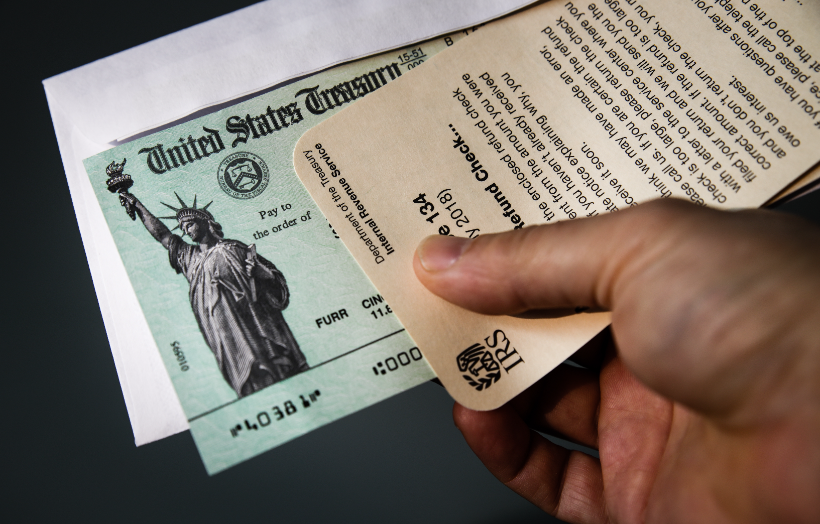Here’s How the New Stimulus Bill Affects Unemployment Benefits
Published:The American Rescue Plan Includes Several Provisions for Federal Unemployment Benefits
The recently signed American Rescue Plan Act (ARPA) makes a lot of changes to pandemic-related federal unemployment insurance benefits. This bill is designed to help the millions of Americans who continue to struggle to find work due to the fallout of the COVID-19 crisis.
Here’s what you should know about the new stimulus deal and how it impacts unemployment benefits.
American Rescue Plan Act (ARPA) of 2021
President Biden signed the American Rescue Plan Act of 2021 on March 11th. This is his first major piece of federal legislation, and the third large-scale stimulus package that the federal government has passed so far. The ARPA contains a number of provisions aimed at providing direct economic relief to American households – including bigger stimulus checks, more unemployment benefits, and expanded tax breaks.
The American Rescue Plan provides significant aid to people who have been searching for full-time work without any luck. “This legislation extends unemployment insurance by $300 a week until September,” said President Biden. “It’s going to help 11 million Americans who were days from losing that benefit. This legislation includes the biggest investment in childcare since World War Two.”
RELATED: $1.9 Trillion American Rescue Plan Signed Into Law
$300 Weekly Unemployment Compensation
The new stimulus bill supports jobless Americans by providing eligible workers with $300 per week in unemployment benefits. This is essentially an extension of the Pandemic Unemployment Assistance and Pandemic Emergency Unemployment Compensation programs, which were originally created by the Coronavirus Aid, Relief, and Economic Security Act (a.k.a. CARES Act) in March 2020.
RELATED: Changes to Unemployment Benefits Under the CARES Act
Extended Expiration Date for Unemployment Benefits
The American Rescue Plan extends the end date for the $300 weekly unemployment compensation from March 14, 2021 (when it was set to expire) to September 6, 2021. This provides another 25 weeks of benefits for out-of-work individuals.
Keep in mind that state governments will need some time to update their systems to accommodate these extensions/modifications to the unemployment benefits programs. Suzi Levine (Principal Deputy Assistant Secretary for Employment and Training) stated, “Getting these extended benefits programmed into state systems is, as President Biden said about the entire American Rescue Plan Act, going to make a difference in people’s everyday lives. We are gaining ground in our fight against the coronavirus and providing additional support will ensure that people don’t have to choose between their health and their economic well-being.”
New $10,200 Unemployment Tax Break
The American Rescue Plan Act includes a new tax break on unemployment benefits that were received during last year. Usually, unemployment benefits are treated as regular income and are considered taxable – however, this provision allows an individual to exclude up to $10,200 in unemployment benefits from their taxable income. That means the first $10,200 of unemployment compensation you received in 2020 will not be subject to federal income tax.
This unemployment tax break applies to your 2020 federal tax return (Form 1040 or Form 1040-SR), but it does not necessarily apply to your state income taxes. You will need to check with your state’s tax authority to see if they are offering the same type of tax exclusion for unemployed individuals.
Eligibility for the new unemployment tax break is based on how much annual income you earn. Your Modified Adjusted Gross Income (AGI) must be less than $150,000 in order to be eligible for this federal tax exclusion.
RELATED: How Will the American Rescue Plan Act (ARPA) Affect Your Taxes?
3rd Round of Stimulus Checks: $1,400 Direct Payments
In addition to the extended weekly unemployment compensation and the new unemployment tax break, the American Rescue Plan also creates a third round of stimulus checks for eligible individuals. The payments will be distributed by the IRS via Direct Deposit, paper checks, and prepaid debit card, depending on the recipient. If you want to find out the status of your stimulus check, you can use the IRS “Get My Payment” online tool.
>> Check the Status of Your Stimulus Payment
This time, stimulus payments are worth up to $1,400 per person or $2,800 for a married couple that files taxes jointly. (The first round of stimulus checks was worth up to $1,200 per person and the second round of checks was worth up to $600 per person.) Households with dependents will receive an additional $1,400 for each dependent.
To receive the full amount, your Adjusted Gross Income (AGI) must be $75,000 or less for a single filer, or $150,000 or less for a married couple filing jointly. You will not receive a 3rd round stimulus check your income is $80,000 or more for single filers (or $160,000 or more for married couples that file jointly)
RELATED: $1400 Stimulus Checks – 3rd Round of Direct Payments Are on the Way



